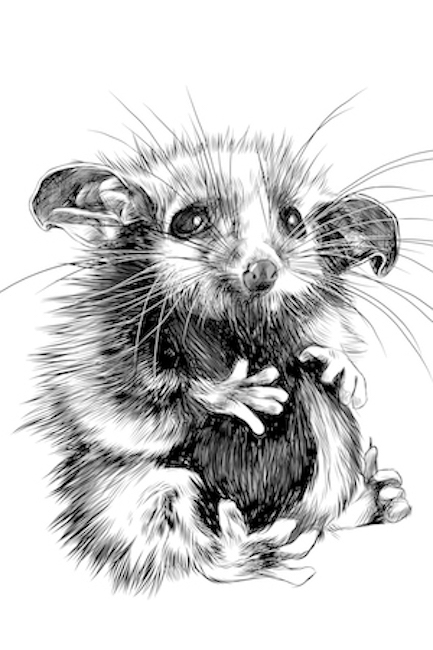He’s drinking: Vodka Cranberry
I’m drinking: Greyhound, naturally
Barry Kaufman: So first off, congratulations on your practice turning 25 this year.
Dr. Curtis Hennessey: When I got here, there was one traffic light off the island; 278 stopped at 170…. There’s a formula on whether a vet hospital will work in a certain area or not. You take the population, divide in half, divide that number by the number of veterinarians in the area, and if it’s not 3,000 or more, your business isn’t going to work. Those were the rough numbers. Basically, our hospital shouldn’t have worked, but Hilton Head has a denser population of pet owners. Most everybody has a pet, and the people who don’t are made up for by the people who have two or three.
The building I am in right now was a tropical fish store. The guy who built it either didn’t realize or didn’t care that it wasn’t zoned retail. As soon as he opened it, the town shut him down. So, it was like a speakeasy. You had to go next door, tell him you wanted some fish, and he’d go unlock the door and get fish. He was trying to figure out what to do with this new building he’d just built, so he decided he’d put a veterinarian in there.
We came to an agreement that we’d go back to Florida, get our house sold and move back up here … then I was homeless. On the way back from the closing, I saw a camper for sale on the side of the road. So, I pulled over and bought that for $3,500. I hooked it up to my GMC Jimmy, pulled it into the driveway, blew the horn and said, ‘How do you like your new house, honey? She was probably five months pregnant with my third kid. So, we rolled that up here and lived at Stoney Creek campground for nine months while we finished off the hospital.
BK: That had to be fun, living in a camper with two kids already and a third on the way.
CH: Yeah, that’ll test a marriage.
BK: Obviously, we need to talk about one of your latest patients, the opossum that wound up making headlines. How is Scarlett?
CH: I saw that possum today, and I personally think what happened is it got attacked by a bird of prey. It had a puncture wound on the right side of its face and it had a big abscess, and I think what happened was… It was a 3.3-pound possum. I think a big hawk, maybe even an eagle, grabbed it, and I think it writhed around and got away. Maybe it was pecking at it—who knows what happened? But I don’t think it got beaten. I know that got big press, but I don’t think that was the case.
We lanced the abscess, and it’s on antibiotics, and I think it’s going to be A-OK. But there’s few things tougher than a possum. They are tough. They asked me, ‘Do you think it could (have been beaten with a golf club),’ and I said, ‘Y’know, three-pound animal, golf club, I’m thinking one swing. I’m thinking that would have been game over. So, fortunately, I don’t think that’s what happened. But it created a heck of a stir, man….
I think the big thing is they’re defenseless. Harming something that’s completely defenseless raises the anger level in all of us. I think that’s why it really cranked up people’s emotion. Physical brutality—people hate that anyway.
BK: Where did it start for you?
CH: The king of Thailand is a huge supporter of the Boy Scouts, so we would do an exchange program where we’d stay with Australian Boy Scouts in Malaysia, and then the next summer they would come up and stay with us. We’d go camping and do jamboree type stuff.
We’re riding on this train through Malaysia, and we’re going through the jungle. It turns out two of the chaperones were Army veterinarians. I started chatting with them because I’d always had a love of animals, and I was like, ‘Wow you can make a living playing with animals. Who thought that?’
When we got back, he called me up and said they had some panther cubs that we (rescued) from a poacher. So, I was bottle feeding them and stuff and I was like, ‘This is really cool.’ That sort of planted the seed. I was 11 at the time.
BK: Moving around so much as a military kid, were you able to keep pets?
CH: Yeah, in Thailand we had pets. They call them khlong dogs.
BK: Khlong dogs?
CH: Klohngs are the waterways over there. So instead of a mutt, you just call them a khlong dog. The very first dog I had was at Ft. Bragg. It was a Basenji, and it ended up getting into all sorts of trouble. The lady who’d had it before us used to play with it with socks and things like that, so it would ambush little kids, steal their hats, and run away all the time. When I was in first grade, my elementary school had this big atrium in the middle, and I look and realize my dog’s in there. My dog had come up to the school yard, and they’d put it in there until the dog catcher could show up.
BK: What’s the menagerie now?
CH: Right now, we just have two. We’ve had as many as five dogs and a cat. The dogs we have, most people would know as German Wirehaired Pointers, but they’re actually called Deutsch-Drahthaar; they’re universal hunting dogs. The youngster is four and the older one is nine.
BK: I see you operate on a two-dog system as well.
CH: I call that heart protection. You have the older dog and you have the next one four or five years later. It helps you train that dog because that older dog is going to help train that younger dog.
BK: What are some things pet owners do you wish they wouldn’t?
CH: I think one of the things that’s changed in the 40 years I’ve been in the industry is food and the feeding. There are all these fads. People are so quick to jump on a fad. The first fad I saw was when IAMS came out with the lamb and rice diet, which was the first carbohydrate/novel protein diet. Then all of a sudden, everyone was feeding lamb and rice. It’s not like lamb and rice are better; it’s just that some dogs had food allergies. They’d never eaten lamb and rice, so they weren’t allergic to it.
Then they had this grain-free thing, where everyone’s going grain-free. And who said that’s a good idea? It’s amazing how gullible people are to these major advertisers. It’s like Blue Buffalo—they came out of nowhere. Now it’s like ‘I’m feeding blue. I’m taking the blue challenge. Release the inner wolf.’ Part of what they’re playing on is our desire to do better for our pets.
BK: So, you’re saying I can just get the Ol’ Roy?
CH: I wouldn’t go that low. But Purina has raised millions and millions of dogs. Not that I’m saying it’s the food, but it’s good food. The thing that most people don’t realize about animal food is that the ingredients label on a bag of animal food means nothing. Dog food, cat food, horse food, whatever.
What matters on a bag of animal food is the guaranteed analysis. On one side you have x percent fat, x percent protein; on the other side it’s going to say ingredients. Those are kind of like recommendations. With human food, if it says that on that label, that better be exactly what’s in there, from greatest to least, right? There are laws that govern that. With animal foods that’s not the case.
Purina, IAMS, Nutramax, Solid Gold all make good food. It’s like automobiles; most manufacturers make their baseline, mid-grade, and high level. Everybody does that, and you decide where you want to be.
It’s not that any one food is the best. It’s an individual thing. It’s like I used to be able to eat a lot of pulled pork. I can still eat it, but it doesn’t have the same effect as it had 25 years ago. I’m gonna know about it for a while.
It’s really hard to make sweeping judgements. It’s an individual pet matter. Think about what dogs historically lived on. When I was a kid, I didn’t know what dog food looked like. My grandma kept a big pot on the back of the stove, and she’d put stale bread and potato peelings and pieces of the chicken in it, and it would cook all day long. She’d slop it down, and the dogs would gobble it up.




